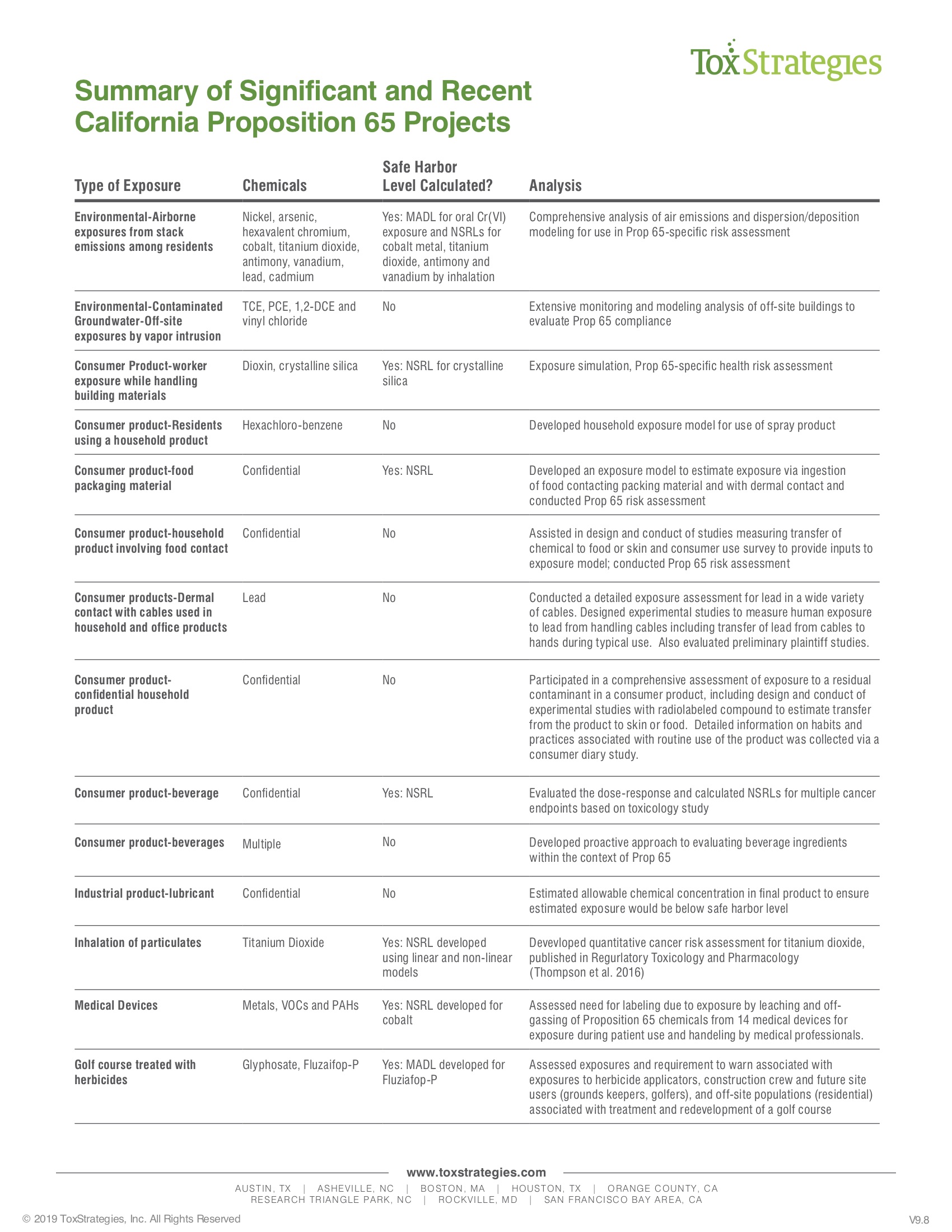ToxStrategies offers California-based consulting scientists and decades of experience assisting clients, including their internal or external counsel, who may be subject to the requirements of Proposition 65 or involved in litigation. ToxStrategies provides consulting services that lead the field in providing Proposition 65 expertise, with toxicologists who understand the calculation of safe-harbor levels, exposure experts with experience conducting human-use exposure simulations, and consulting scientists who regularly assess chemical exposures via food.
California’s Proposition 65, officially known as the Safe Drinking Water and Toxics Enforcement Act of 1986, established two primary requirements:
- Prohibits contaminating drinking water with chemicals known to cause cancer or reproductive toxicity
- Requires warning before exposure to chemicals known to cause cancer or reproductive toxicity.
The Office of Environmental Health Hazard Assessment (OEHHA) is charged with implementing the requirements of Proposition 65. While perhaps well intentioned, Proposition 65 has spawned a slew of unintended consequences and significant litigation, greatly affecting companies that do business in California.
ToxStrategies Consulting Services has assisted clients in evaluating a variety of situations relevant to Proposition 65:
- Household consumer products
- Food or food-contact products
- Medical devices
- Air emissions
- Groundwater contamination
Our specific project experience includes:
- Safe-harbor levels
- Evaluation of safe-harbor levels (i.e., no-significant-risk levels [NSRLs] for carcinogens, and maximum allowable daily limits [MADLs] for reproductive toxicants) derived by OEHHA
- Derivation of safe-harbor levels consistent with statutory requirements, when none exist, or as alternatives to OEHHA-derived values
- Weight-of-evidence (WOE) assessments of carcinogenicity and/or reproductive toxicity
- Mode-of-action (MOA) analyses to support a non-linear dose-response extrapolation, when warranted
- Publication of analyses in peer-reviewed scientific literature
- Exposure Assessment
- Estimate daily exposure consistent with statutory requirements, using a tiered approach
- Default and/or literature-based assumptions when sufficient to demonstrate that potential exposure is below the safe-harbor level
- Exposure models to evaluate ingestion (direct or via hand-to-mouth contact), dermal contact, or inhalation exposure
- Exposure simulations when necessary to provide more realistic estimates of real-world exposure
- Estimate daily exposure consistent with statutory requirements, using a tiered approach
Open and Download Prop 65 Projects

